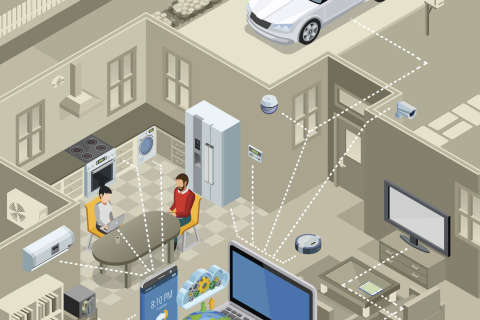Q: I’m considering a DIY home security system. Any suggestions?
There’s never been a better time to consider adding devices to your home that allow you to monitor what’s going on from anywhere in the world.
The sheer number of options can be overwhelming, so breaking down your needs is the best way of narrowing down your options.
What do you want to monitor?
Depending on what you’re interested in monitoring, your needs could be as simple as a single camera pointing out of a window to an entire family of sensors throughout your house.
A couple of critical elements for success are a solid internet connection and good Wi-Fi coverage over the areas where you want to install your devices.
Completely wireless and weatherproof options, such as the Arlo cameras, allow you to extend your coverage to locations outside of your home, as long as you can get a Wi-Fi signal. Upgrading to a mesh network can dramatically improve your Wi-Fi coverage area if needed.
Monitoring options
Virtually all DIY options on the market come with some form of app and alert system that use your smartphone as the monitoring device. This means that you will be the one to decide whether to call police if something happens.
Most monitoring systems offer basic storage of video or image files for free, with a monthly charge for higher levels of storage. And some offer cellular connections as a backup if your internet connection goes down.
If you want an outside service that offers 24/7 monitoring on your behalf, make sure you calculate the ongoing cost of this service, which can range from $10 to $30 per month.
Options from companies such as SimpliSafe and Scout allow you to choose either monitoring method, while Abode adds the ability to use short-term on-demand professional monitoring for those times you’ll be offline (e.g. on vacation).
Most of these companies extend support to devices from other platforms — such as Alexa, Nest and Zigbee — as well.
Unique approaches
If you’re looking for basic front- and back-door monitoring, Kuna’s approach is to integrate a camera, motion sensors and a two-way intercom into the light fixtures on your porch. You can either replace your current fixture with one of theirs or add their Toucan kit on an existing light fixture.
The Rex Plus Electronic Watchdog uses radar to detect intruders and simulate a barking dog. The closer they get, the more frequent the barking becomes (one review claims that it keeps bears away from the house).
If you’re a renter and don’t want to physically install anything, an option called Piper incorporates a 180-degree camera, motion/sound detection, two-way audio and a siren into a single device that just needs to plug into a power outlet to work.
Tinkerer’s platform
One of the more mature home automation platforms is SmartThings, which not only has a large number of devices it can work with, but also has over 40 recipes on IFTTT (If This Then That), or you can create your own automation triggers.







